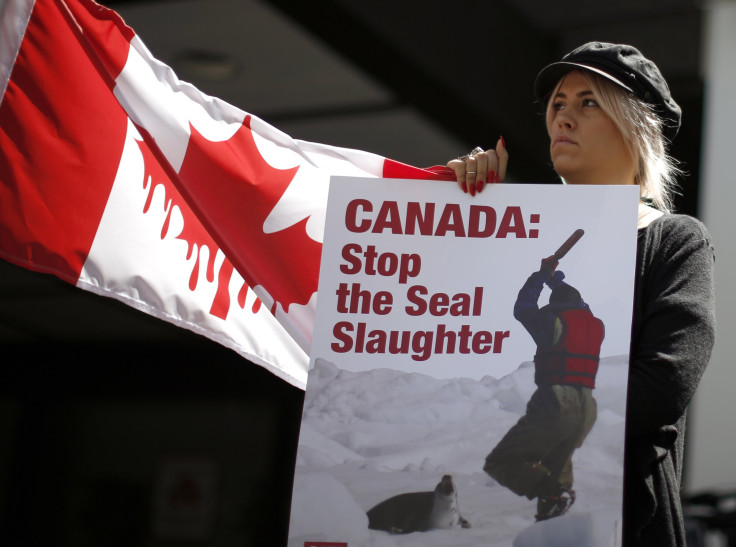Canada's Commercial Seal Hunt Quota Increased To Nearly Half Million

The Canadian government is facing fierce criticism for increasing the country’s seal hunting quota from 400,000 in 2014 to nearly 470,000 this hunting season, according to media reports. As part of Canada’s annual commercial seal hunt, which takes place during March and April, thousands of young seals are killed for their fur, despite a near global ban on their sale.
“The quotas are going up every year, despite opposition and the market for seal pelts disappearing,” Andy Ottaway of the Seal Protection Action Group, reportedly said. “The government is keeping the quotas they have already set, but the actual hunters themselves cannot be bothered to go out because they cannot sell the pelts. The incentive is gone.”
Moreover, he added, the decision to raise the quota was even more “outrageous” given the fact that these animals are facing severe threats from climate change, which has drastically deteriorated their habitable areas. Seals are found along most coasts and cold waters, but a majority of them live in the Arctic and Antarctic waters -- two regions most affected by global warming in recent years.
“It’s outrageous that the Canadian government is putting quotas up on an endangered species … which is already under threat,” Ottaway reportedly said.
However, Canada’s fisheries department reportedly defended the high quota, claiming that the government’s decision is “informed by science.”
“The overall Atlantic seal population, including harp seals, grey seals and hooded seals is healthy and abundant. Harp seals are currently estimated at approximately 7.4 million animals which is more than three times what it was in the 1970s,” a government representative reportedly said. “It is truly unfortunate that decades of misinformation campaigns by animal rights groups have had such a negative effect on the economic well-being of rural and Aboriginal Canadians.”
Although the seals are mainly killed for their pelts, hunters also sell their blubber, which is then used to make seal oil -- sold as a health supplement -- and their penises, which are popular aphrodisiacs in some Asian markets. In order to avoid damaging the seals’ pelts, the animals are usually killed with a sharp blow to the skull using “hakapiks,” or metal hook-tipped clubs -- a method that several animal rights groups have decried as cruel and inhumane.
© Copyright IBTimes 2024. All rights reserved.






















